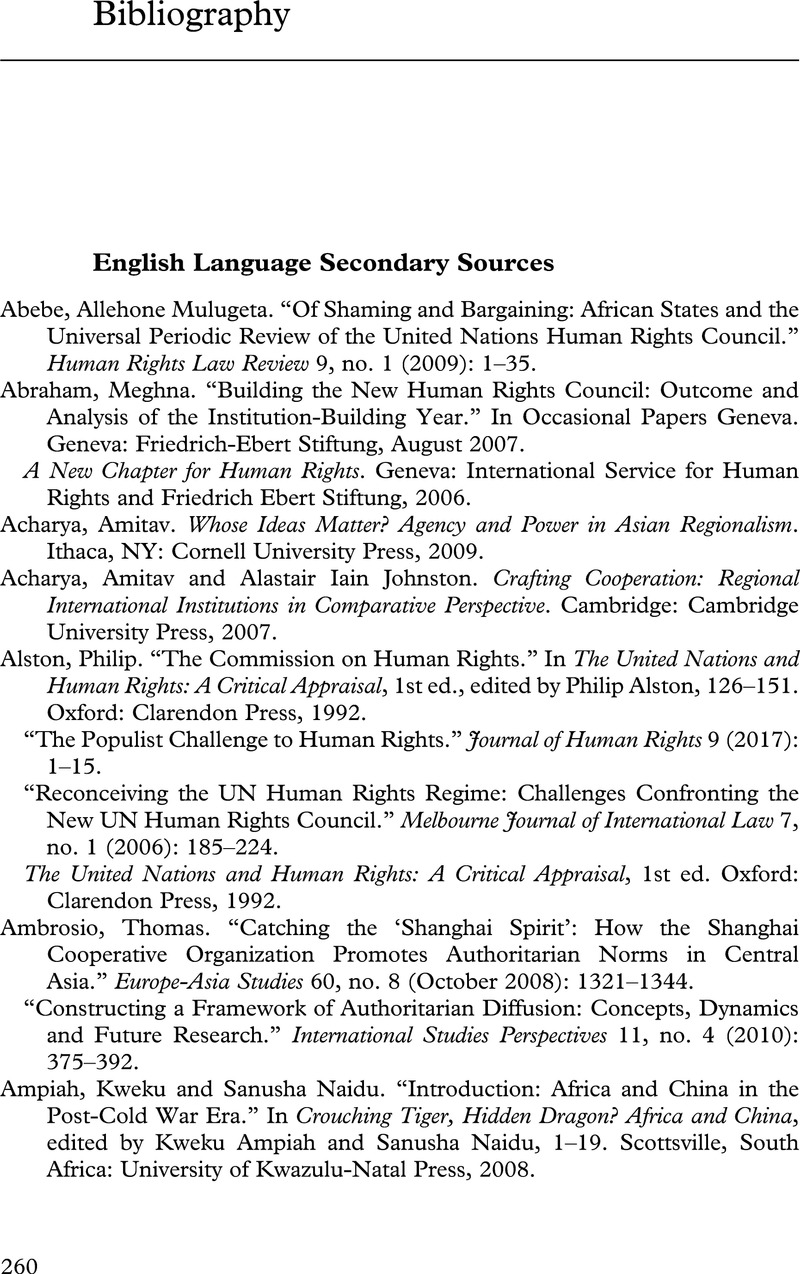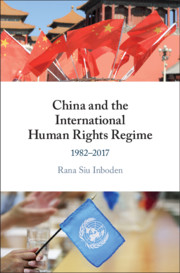Book contents
- China and the International Human Rights Regime
- China and the International Human Rights Regime
- Copyright page
- Dedication
- Contents
- Figures
- Tables
- Acknowledgments
- Abbreviations
- 1 Introduction
- 2 China’s Evolving Posture toward the International Human Rights Regime: 1949–2017
- 3 China, the Convention against Torture, and the Optional Protocol to the Convention against Torture: 1982–2002
- 4 China and the Establishment of the Human Rights Council: 2004–2007
- 5 China and the International Labour Organization’s Conference Committee on the Application of Standards: 1983–2017
- 6 Explaining China’s Behavior
- 7 Conclusion
- Bibliography
- Index
- References
Bibliography
Published online by Cambridge University Press: 15 March 2021
- China and the International Human Rights Regime
- China and the International Human Rights Regime
- Copyright page
- Dedication
- Contents
- Figures
- Tables
- Acknowledgments
- Abbreviations
- 1 Introduction
- 2 China’s Evolving Posture toward the International Human Rights Regime: 1949–2017
- 3 China, the Convention against Torture, and the Optional Protocol to the Convention against Torture: 1982–2002
- 4 China and the Establishment of the Human Rights Council: 2004–2007
- 5 China and the International Labour Organization’s Conference Committee on the Application of Standards: 1983–2017
- 6 Explaining China’s Behavior
- 7 Conclusion
- Bibliography
- Index
- References
Summary

- Type
- Chapter
- Information
- China and the International Human Rights Regime1982–2017, pp. 260 - 291Publisher: Cambridge University PressPrint publication year: 2021

